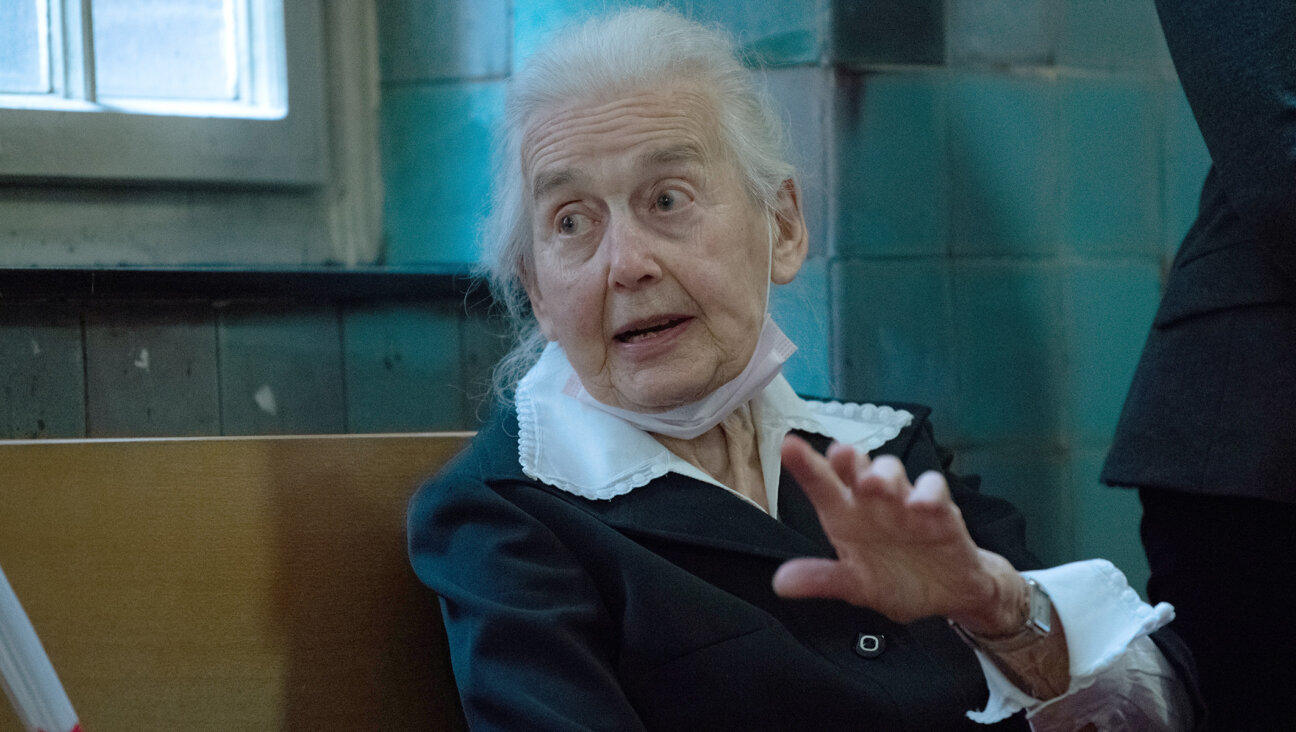Remembering Eddie Van Halen and his Jewish mentor

Eddie Van Halen Image by Getty Images
Eddie Van Halen, the iconoclastic rock guitarist best known for his instrumental contributions to his namesake band, has died after a year-long bout with throat cancer. Van Halen, who in 1972 founded the group Van Halen with his brother, Alex Van Halen, was 65. Eddie’s flashy guitar-playing, along with frontman David Lee Roth’s outrageous, wild-man antics, separated Van Halen from the crowded pack of 1970s heavy-metal bands, giving them real credibility as a creative outlet and not just another industry-manufactured long-haired money machine.
Van Halen, the group, was an odd mix of two Dutch brothers — Eddie and Alex were born in Amsterdam — and a midwestern-bred American Jew. The Van Halens’ father was a musician and their mother was from the Indonesian island of Java. David Lee Roth was born in Bloomington, Ind. His father, Nathan Lee, was an eye doctor, and his mother, Sibyl Roth, was a schoolteacher. Roth once told an interviewer that his first music idol was Al Jolson, who was born Asa Yoelson in the Lithuanian shtetl of Srednike.
Eddie Van Halen’s blues-based guitar style is often said to have been inspired by English blues-rock guitarists including Eric Clapton and Jimmy Page. But neither of those guitarists made much use of the two-handed tapping technique and complex harmonics that came to define Van Halen’s style. The guitarist credited midwestern Jewish-American guitarist Harvey Mandel, who became a member of Canned Heat after sitting in with the band at the original Woodstock Festival in August 1969, for opening his eyes (and fingers) to the full potential of the guitar strings and neck. The reference book “Legends of Rock Guitar: The Essential Reference of Rock’s Greatest Guitarists” credited Mandel for his “relentless fuzztone, feedback-edged solos, and unusual syncopated phrasing.” Those words could also aptly describe Van Halen’s style.
Mandel was one of a group of prominent 1960s midwestern Jewish bluesmen, including Michael Bloomfield, Corky Siegel, Barry Goldberg, and Bob Margolin, along with New York City-bred Al Kooper (born Alan Peter Kuperschmidt) and Philadelphia’s David Bromberg. A number of these musicians wound up crossing musical paths at some point with fellow Jewish-American midwesterner Bob Dylan.
Mandel was valued so highly by his peers for his innovative guitar work that he came within inches of joining the Rolling Stones as a replacement guitarist after Mick Taylor quit in 1974. He auditioned for the band, and his guitar work can be heard on two songs from the Stones’s 1976 album “Black and Blue”: “Hot Stuff” and “Memory Motel.” (Some English guy named Ronnie Wood, formerly of Rod Stewart’s band, got the full-time gig.) Mandel also played with bluesman Charlie Musselwhite and for English guitarist John Mayall’s legendary band, the Bluesbreakers.
Mandel, who was born in 1945, still performs and records.
A message from our CEO & publisher Rachel Fishman Feddersen

I hope you appreciated this article. Before you go, I’d like to ask you to please support the Forward’s award-winning, nonprofit journalism during this critical time.
We’ve set a goal to raise $260,000 by December 31. That’s an ambitious goal, but one that will give us the resources we need to invest in the high quality news, opinion, analysis and cultural coverage that isn’t available anywhere else.
If you feel inspired to make an impact, now is the time to give something back. Join us as a member at your most generous level.
— Rachel Fishman Feddersen, Publisher and CEO























